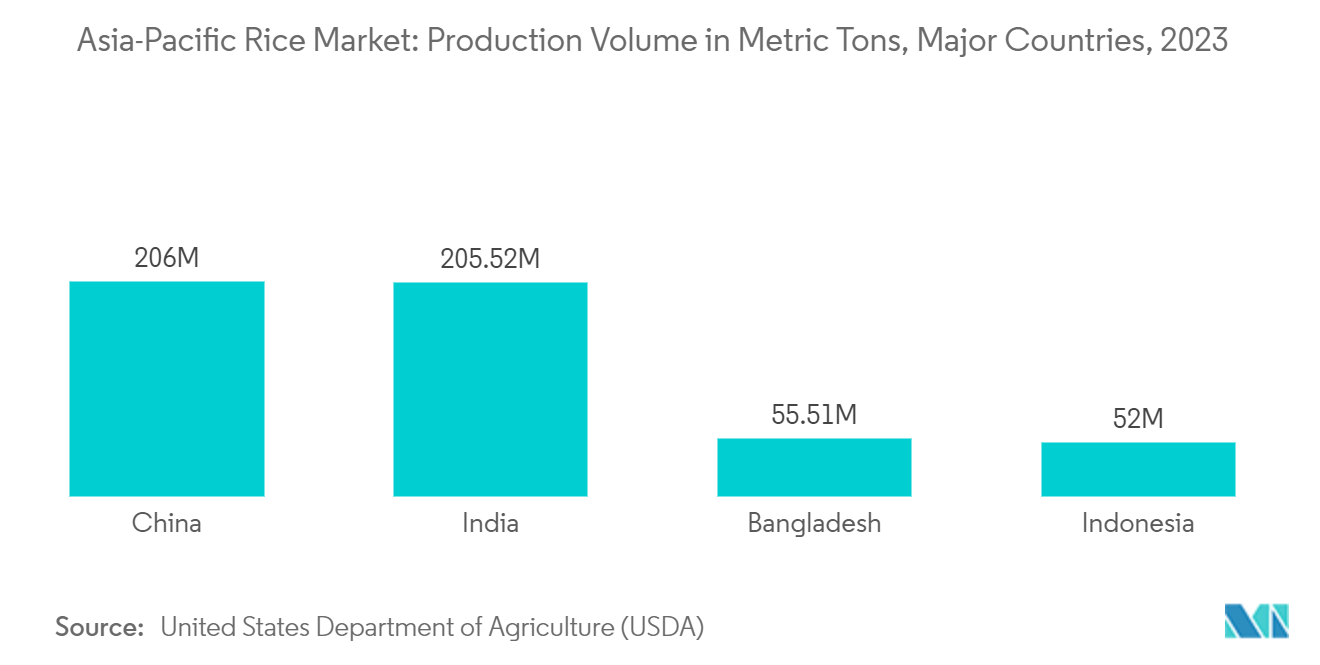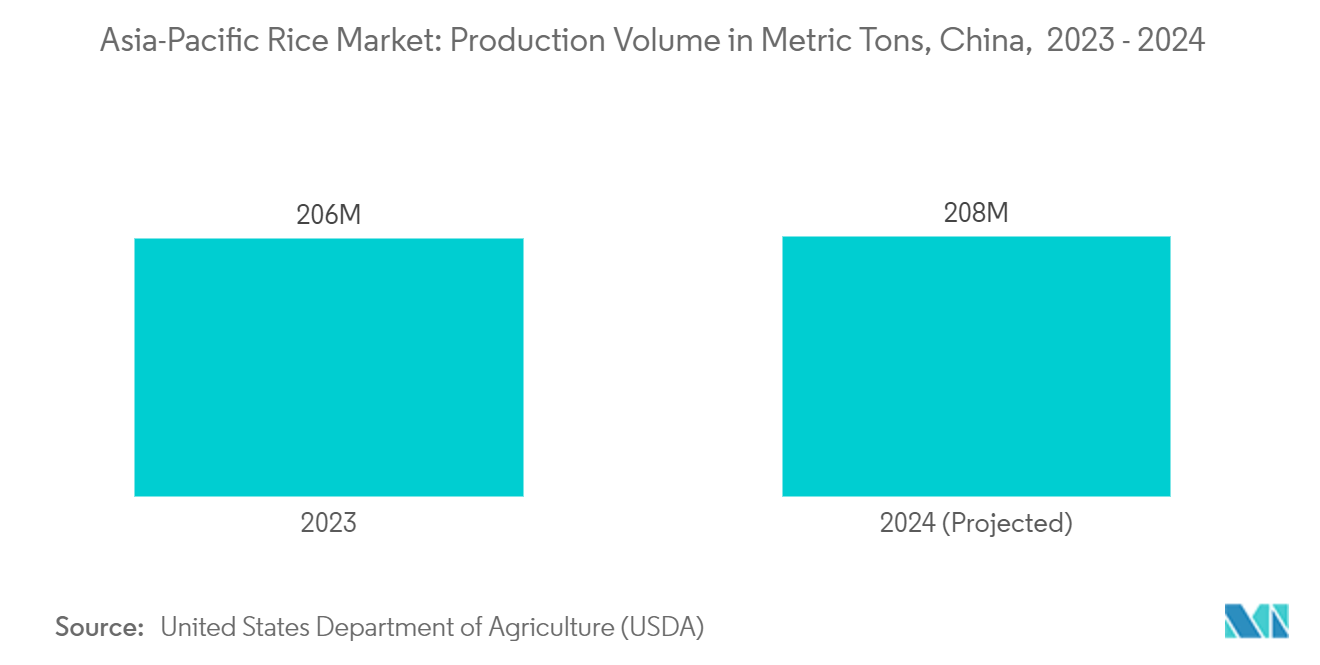Market Trends of Asia-Pacific Rice Industry
Rising Regional Population Drives Demand
- Asia, home to roughly 4.75 billion people, represents about 60% of the global population. In 2022, the combined population of China and India exceeded 2.8 billion. The United Nations projects that Asia's population will reach 5.28 billion by 2055, which is expected to increase the demand for rice. According to the Sustainable Rice Platform (SRP) Survey, rice is central to Asian diets. Consumers in India, Indonesia, Thailand, and Vietnam indulge in rice more than five times weekly. In Pakistan, rice is a popular staple, but its consumption is more moderate, with most people eating it two to three times a week.
- The average person in the region consumes over 77 kg of food annually. In several Asian nations, rice accounts for over 70% of the calorie intake. Additionally, in Asia-Pacific, rice is the primary staple for the poorest and malnourished populations, who often lack access to or cannot afford more nutritious alternatives. Rice has become an essential commodity for the region and the world. Its significance extends beyond global food security, intertwining with economic growth, employment, and social stability.
- The International Rice Research Institute (IRRI) leads efforts to meet the food needs of Asia-Pacific. For example, IRRI is at the forefront of developing rice varieties enriched with vital nutrients, including vitamin A, zinc, and iron. Additionally, the institute is researching low glycemic index rice, which could benefit people with diabetes and those at risk. With the growing demand for rice, IRRI champions high-yielding varieties. The institute is enhancing technologies like drying and storage to combat post-harvest losses. Also, IRRI promotes mechanization, supports land consolidation, and implements near real-time information systems to address the region's rice demand.

China Leads in Both Production and Consumption
- Rice is a cornerstone food crop in China, serving as the staple for approximately 65% of its population. In 2023, China's rice cultivation and production constituted 28% of the global total of 206 million metric tons (USDA). China's climate is ideally suited for paddy cultivation, leading to widespread production, predominantly for local consumption. Rice farms, primarily in Central China, specifically in Jiangsu, Anhui, Hubei, and Sichuan along the Yangtze River Valley, contribute to approximately 49% of the nation's total rice output (National Bureau of Statistics of China).
- China's vigorous research initiatives significantly enhance its production capabilities. For instance, in 2023, trial farms in China marked a milestone by completing the second harvest of genetically modified (GM) giant rice. Developed by the Institute of Subtropical Agriculture at the Chinese Academy of Sciences, this rice promised a higher yield and demonstrated superior resistance to pests and floods. Some farmers reported an impressive yield of 12.6 metric tons per hectare. As the National Bureau of Statistics reported, trials conducted in Sanzhou County, Guizhou Province, achieved a yield in 2023 of approximately 1.8 times the national average rice yield of 7.1 metric tons per hectare in 2022. This agricultural breakthrough underscores the Chinese government's commitment to prioritizing rice production, especially amid climate crises, supply chain disruptions, and geopolitical tensions.
- The country is a significant player in the international rice market, with key importers including Egypt, Korea, Turkey, Ivory Coast, and Japan. Given the strong domestic consumption and international demand, China's rice production is set to remain robust during the forecast period. Thus, China's ample rice supply is pivotal for global food security.


